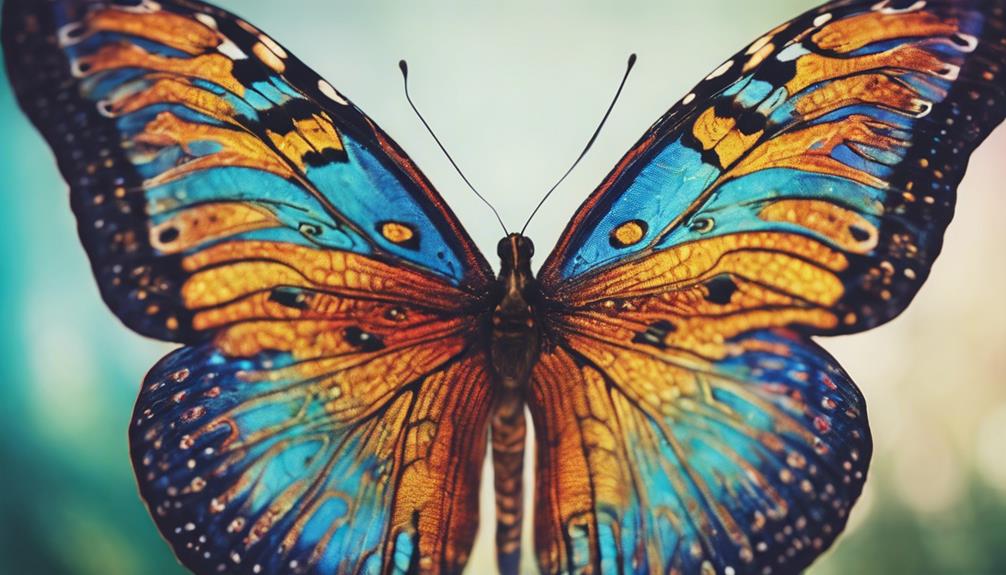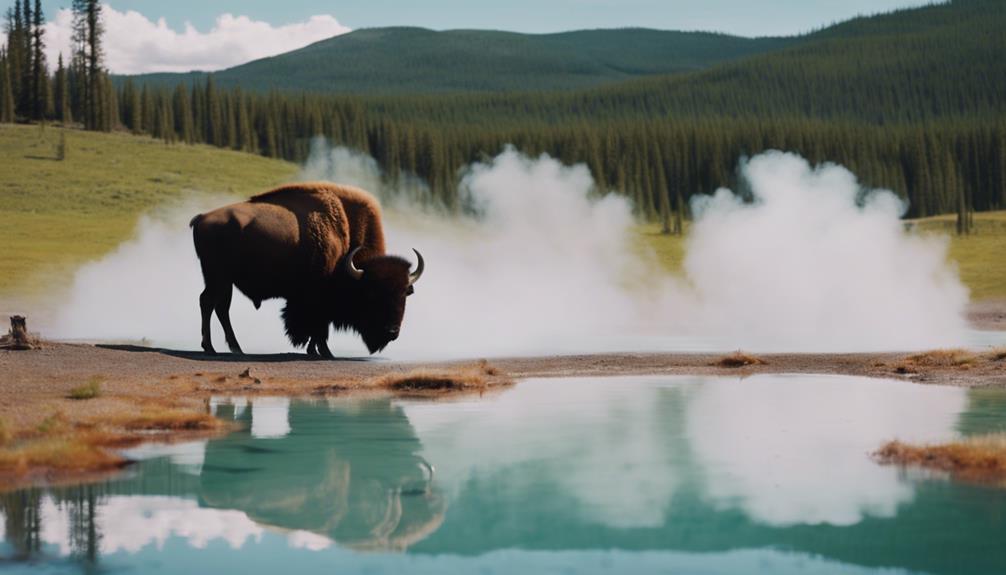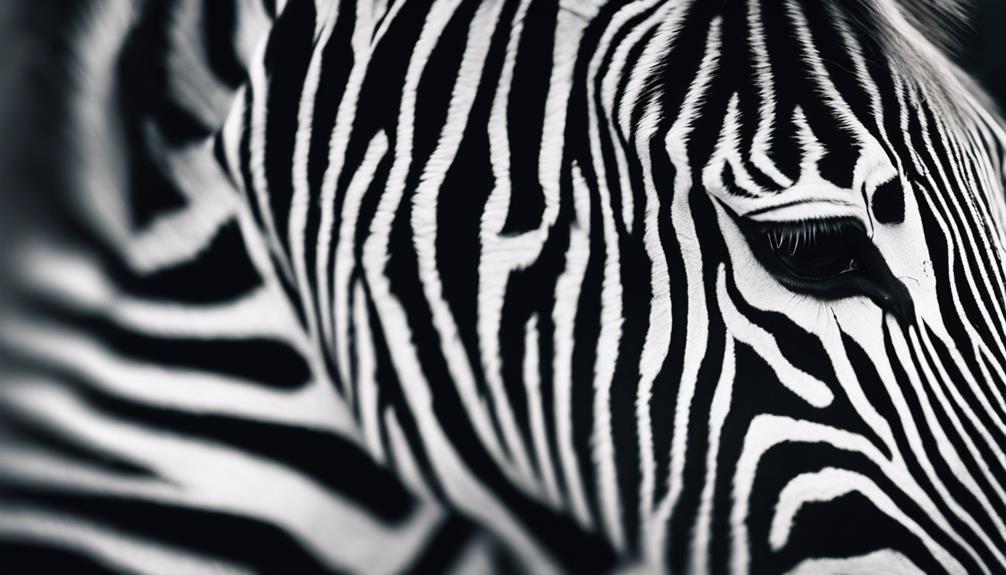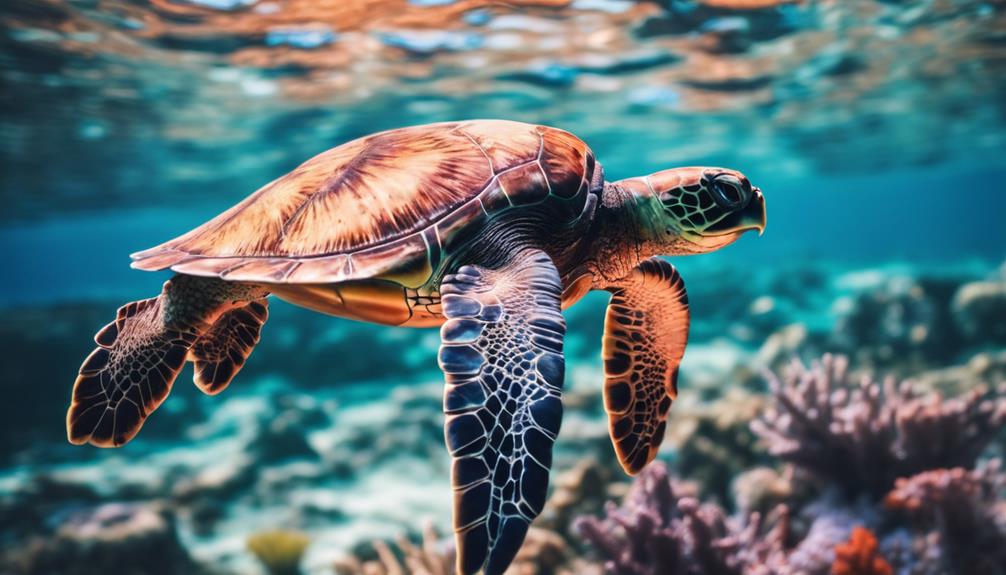Are you ready to dive into the fascinating world of art?
Get ready to be amazed by these 10 fun facts that will leave you in awe.
From the oldest known artwork to the world’s most expensive painting, art has a way of captivating our imagination and sparking our creativity.
Discover how art communicates, heals, and even challenges our perception of reality.
Join us on this journey as we explore the incredible connection between art and our shared human experience.
Let’s embark on this adventure together!
Key Takeaways
- Art is a powerful form of expression that transcends language barriers and reflects the values, beliefs, and experiences of societies.
- Art has a historical and cultural significance, reminding us of our roots and collective heritage, while also serving as a form of protest against societal injustices.
- Art can deeply move and convey emotions, creating immersive experiences through techniques such as composition, color, texture, and perspective.
- The fusion of art and technology offers exciting possibilities for creativity and innovation, leading to unimaginable advancements in various fields.
The Oldest Known Artwork
The oldest known artwork can be traced back over 40,000 years. Imagine standing in front of ancient cave paintings, witnessing the origins of human creativity. These early expressions were not mere drawings on walls; they were symbols of something deeper, something profound.
They represented our ancestors’ connection to the world around them and their desire to understand and belong within it. As you gaze at these ancient masterpieces, you can almost feel the spiritual energy that once filled these sacred spaces.
The symbolism embedded in these artworks speaks volumes about our shared human experience – a longing for meaning, identity, and a sense of belonging that transcends time and place. It is through art that we are reminded of our roots and find solace in our collective heritage.
Art as a Form of Communication
When it comes to art, you possess the key to unlock its expressive power.
Through your artistic endeavors, you have the ability to visually tell stories that transcend language barriers and touch the hearts of people around the world.
Moreover, your art holds immense cultural significance as it reflects the values, beliefs, and experiences of different societies throughout history.
Art’s Expressive Power
You’ll be amazed by how art can deeply move and convey emotions. It has the power to heal, to inspire, and to bring people together. Here are five ways that art can touch your soul:
- A vibrant painting, with its bold strokes of color, evokes a sense of joy and vitality.
- Sculptures, with their intricate details and textures, invite you to reach out and feel the artist’s vision.
- A delicate watercolor landscape transports you to a serene world of tranquility.
- Abstract art challenges your perception and allows you to explore the depths of your own imagination.
- Photography captures fleeting moments in time, freezing them forever in a single frame.
Art is not only a means of self-expression but also a powerful tool for mental health. The act of creating art can provide therapeutic benefits such as stress reduction, increased self-esteem, and improved mood.
Whether you’re an artist or an admirer, let yourself be captivated by the transformative power of art.
Visual Storytelling Through Art
Visual storytelling through art can transport you to different worlds and evoke a range of emotions. It is a powerful technique that allows artists to communicate their ideas and narratives visually, capturing the attention of viewers and inviting them into their creative universe. Through various visual storytelling techniques such as composition, color, texture, and perspective, artists can create immersive experiences that resonate with our deepest feelings. Art has the ability to speak directly to our souls, bypassing language barriers and connecting us on a universal level. It allows us to explore different perspectives, cultures, and histories while fostering empathy and understanding. That’s why art education plays a crucial role in nurturing creativity and encouraging critical thinking skills. By learning about art history, techniques, and practicing artistic expression ourselves, we can develop a deeper appreciation for visual storytelling as an essential part of human connection.
| Techniques | Importance of Art Education |
|---------------------|----------------------------|
| Composition | Nurturing Creativity |
| Color | Encouraging Critical Thinking Skills |
| Texture | Developing Appreciation for Visual Storytelling |Cultural Significance of Art
Immerse yourself in the rich tapestry of cultures and explore the profound impact art has on shaping identities and preserving traditions.
Throughout history, art has served as a powerful tool for expressing emotions, beliefs, and social commentary. From ancient civilizations to modern-day movements, artists have used their creativity to ignite change and spark conversations.
In ancient civilizations, art was deeply intertwined with religious rituals and cultural practices. It allowed societies to express their beliefs, record historical events, and communicate with the divine. The intricate murals of Egypt, the vibrant pottery of Greece, and the majestic sculptures of Rome all offer glimpses into these ancient worlds.
Today, art continues to be a form of protest against societal injustices. Artists use their work to challenge norms and shed light on pressing issues such as racism, gender inequality, environmental degradation, and political corruption. Through paintings, sculptures, photography, graffiti – every medium imaginable – they create visual narratives that inspire reflection and action.
Art has always played a pivotal role in shaping our collective identity. It reflects who we are as individuals and communities while connecting us to our pasts. By embracing the diversity of artistic expressions from different cultures around the world, we can foster a sense of belonging that transcends borders and unites us in our shared humanity.
The World’s Most Expensive Painting
The world’s most expensive painting is currently ‘Salvator Mundi’ by Leonardo da Vinci. This masterpiece sold for a staggering $450 million at an auction in 2017, making it the most valuable painting ever sold.
Here are three reasons why the art market places such high value on certain works:
- Rarity: ‘Salvator Mundi’ is one of only 15 known da Vinci paintings in existence, adding to its allure and scarcity.
- Historical Significance: Da Vinci was a visionary artist whose works continue to captivate audiences centuries later. The historical importance and legacy associated with his name contribute to the astronomical prices his paintings fetch.
- Demand and Prestige: The art market operates on supply and demand dynamics, with collectors willing to pay exorbitant amounts for prestigious pieces that enhance their reputation as discerning patrons of the arts.
In this world of extraordinary valuations, owning a piece like ‘Salvator Mundi’ can make you feel like part of an exclusive club, connected to history and esteemed by your peers in the art community.
Art Therapy and Its Benefits
Engage in art therapy to tap into your emotions and find healing through creative expression.
Art has long been recognized as a powerful tool for self-discovery and emotional well-being.
Through various art therapy techniques, you can explore your unique inner world, express your feelings, and gain insight into yourself.
Whether it’s painting, drawing, or sculpting, the act of creating art allows you to access parts of yourself that may be difficult to express verbally.
It provides a safe space for processing emotions and finding solace.
Art as healing is not limited to the final product; it’s about the process of creation itself.
The Origins of Street Art
Explore the vibrant origins of street art and immerse yourself in the dynamic world of urban creativity.
Street art, born out of a rebellious spirit and a desire to reclaim public spaces, has evolved into a powerful form of self-expression. Its origins can be traced back to the graffiti movements that emerged in major cities around the world during the 1960s and 1970s.
Influenced by hip-hop culture and political activism, street artists began using their artwork to challenge societal norms and give voice to marginalized communities.
Over time, street art has evolved from simple tags and throw-ups to intricate murals and installations that engage with social issues, making it an integral part of contemporary urban landscapes.
As this artistic movement continues to evolve, its impact on society grows stronger, inspiring creativity and fostering a sense of belonging for both artists and spectators alike.
Leonardo Da Vinci’s Masterpieces
Now that you’ve learned about the fascinating origins of street art, let’s delve into the awe-inspiring masterpieces of Leonardo Da Vinci. His techniques and symbolism in his art will truly captivate your imagination.
- Meticulous Observations: Da Vinci was a master at studying and capturing intricate details of nature and human anatomy in his artwork. His keen eye for observation allowed him to create lifelike representations that were way ahead of his time.
- The Art of Invention: Da Vinci’s innovative mind extended beyond painting. He was an engineer, scientist, and inventor as well. His sketches and designs showcased his visionary ideas for flying machines, submarines, and other groundbreaking inventions.
- Symbolism Galore: Da Vinci incorporated hidden symbols into many of his paintings, adding deeper layers of meaning to his work. From religious allegories to political commentaries, deciphering these symbols allows us to unravel the enigmatic world created by this genius artist.
Exploring Leonardo Da Vinci’s masterpieces is like embarking on a journey through time and imagination—a true testament to the power of art in connecting us all.
The Connection Between Art and Emotions
Are you ready to dive into the profound connection between art and emotions?
Prepare to be captivated by the power of art as a channel for emotional expression, as it has the ability to convey complex feelings in a way that words often cannot.
Get ready to experience a rollercoaster of emotions as we explore how art can evoke strong feelings within us, stirring our souls and leaving us with a lasting impact on our emotional well-being.
Art as Emotional Expression
Art can evoke a wide range of emotions in its viewers. It has the power to make you feel joy, sadness, anger, and everything in between. But did you know that art can also be used as a therapeutic tool? Art therapy techniques have been proven to help individuals express their emotions, find healing, and promote personal growth. Through creative expression, individuals can explore their feelings and experiences in a safe and supportive environment. Art allows for a deeper understanding of oneself and can provide a sense of belonging and connection. By using various art materials and techniques such as painting, drawing, or sculpting, individuals can tap into their inner thoughts and emotions that may be difficult to express through words alone.
| Techniques | Description | Benefits |
|---|---|---|
| Painting | Using paintbrushes to create visual artwork | Promotes self-expression |
| Drawing | Creating images with pencils or pens | Enhances focus and concentration |
| Sculpting | Shaping clay or other materials into 3D forms | Encourages mindfulness |
Art is not just about creating beautiful masterpieces; it is also about connecting with our emotions and finding solace in the process. So next time you feel overwhelmed by your emotions, grab some art supplies and let your creativity flow!
Art Evoking Strong Feelings
When you view a powerful piece of artwork, it can stir up intense emotions within you. Art has the ability to touch your soul, evoking feelings of joy, sadness, anger, or even awe.
This emotional connection is not only profound but also beneficial for your mental health. Art therapy has been proven to alleviate stress and anxiety, providing a safe outlet for self-expression and healing.
Moreover, art has the power to create social change by challenging norms and sparking important conversations. Artists throughout history have used their work as a medium to highlight social injustices and advocate for equality.
Impact of Art on Emotions
In the previous subtopic, we explored how art can evoke strong feelings within us. Now let’s delve into the impact of art on our emotions and its therapeutic benefits. Art has a profound effect on our mental health, offering a powerful outlet for self-expression and emotional release. It allows us to explore and process complex emotions in a safe and non-judgmental space.
Art therapy, for instance, is a recognized form of treatment that utilizes artistic expression to improve psychological well-being. It encourages self-reflection, promotes relaxation, reduces stress, and enhances self-esteem. Through creating or engaging with art, individuals can find solace, gain insight into their thoughts and feelings, and develop healthier coping mechanisms.
To illustrate the therapeutic benefits of art on mental health:
| Therapeutic Benefits | Impact on Mental Health |
|---|---|
| Self-expression | Promotes emotional healing |
| Relaxation | Reduces stress levels |
| Reflection | Enhances self-awareness |
Art truly has the power to uplift our spirits and nurture our inner selves. So why not embrace this incredible medium as a means to enhance your emotional well-being?
The Role of Art in Cultural Identity
Cultural identity is often shaped by the art created within a specific community. Art has the power to express individuality and capture the essence of societal values. It serves as a mirror reflecting our beliefs, customs, and traditions.
Here are four compelling reasons why art plays a vital role in shaping cultural identity:
- Self-expression: Through art, individuals can convey their unique perspectives, experiences, and emotions, fostering a sense of belonging and understanding.
- Preservation of heritage: Art serves as a medium to preserve cultural heritage, passing down traditions from generation to generation.
- Connection with history: Art provides a tangible link to our past, enabling us to connect with the stories and struggles of our ancestors.
- Celebration of diversity: By showcasing diverse artistic expressions, communities celebrate their rich cultural tapestry while embracing inclusivity.
Art truly holds the power to shape and define our sense of cultural belonging.
The Influence of Art on Science and Technology
You can’t deny the impact that art has on the advancements of science and technology. Artistic expression has always pushed boundaries, inspiring innovation and fostering new ideas. Today, with the rise of artificial intelligence and digital art, this influence is more profound than ever before.
Artificial intelligence is revolutionizing the way we create and consume art. AI algorithms are being used to generate stunning visuals, compose music, and even write poetry. This intersection of art and technology opens up endless possibilities for creative exploration.
Digital art, too, plays a significant role in shaping our technological advancements. It blurs the lines between traditional art forms and technology, allowing artists to experiment with new mediums and techniques. From virtual reality installations to interactive digital sculptures, artists are pushing boundaries like never before.
In this era of rapid technological advancement, embracing the relationship between art and science is crucial for progress. By merging creativity with innovation, we can unlock breakthroughs that will shape our future in unimaginable ways.
So let your imagination soar as you explore this exciting fusion of art and technology!
Famous Art Hoaxes Throughout History
Throughout history, there have been numerous famous hoaxes that fooled the art world and left experts questioning the authenticity of renowned works. These art forgeries not only deceived the experts but also challenged our perception of what is real and what is fake. They remind us that even in the world of art, things are not always as they seem.
Some of these famous hoaxes include:
- The ‘Vermeer’ paintings by Han van Meegeren, which were so convincing that they were initially believed to be genuine Vermeer masterpieces.
- The controversial art installations by Banksy, known for his thought-provoking pieces that question societal norms and challenge traditional notions of art.
- The infamous ‘Piltdown Man’ hoax, where a skull was forged to resemble a missing link between humans and apes, fooling scientists for decades.
- The mysterious case of Mark Landis, a prolific art forger who donated countless forged artworks to museums under various false identities.
These examples demonstrate how artists and individuals alike can manipulate our perception of reality through their artistic creations or deceptions. As we continue to explore the world of art, it is essential to question everything and seek an understanding beyond surface appearances.
Frequently Asked Questions
What Are Some Examples of Famous Art Hoaxes Throughout History?
Looking for famous art hoaxes throughout history? Well, let me tell you, there have been some jaw-dropping ones! From the infamous “Piltdown Man” to the skilled forgeries of Han van Meegeren, art can truly deceive.
How Does Art Therapy Benefit Individuals in Terms of Their Mental Health?
Art therapy techniques provide numerous benefits for individuals struggling with mental health issues. By engaging in creative expression, trauma survivors can find healing and empowerment, fostering a sense of belonging and connection within themselves and their communities.
What Are Some of Leonardo Da Vinci’s Most Famous Masterpieces?
Leonardo da Vinci’s most famous masterpieces include the Mona Lisa and The Last Supper. These works showcase his incredible talent and attention to detail, leaving a lasting impact on art history.
How Does Art Influence Science and Technology?
Art has a profound influence on science and technology. It sparks innovation, pushing boundaries and inspiring new ideas. By combining artistic creativity with scientific knowledge, we can create a future where art and technology coexist in harmony, shaping our world.
What Is the Role of Art in Shaping Cultural Identity?
Art plays a vital role in shaping cultural identity. It serves as a form of resistance and has the power to bring about social change. Through art, people find belonging and create a collective vision for the future.
Conclusion
Congratulations! You’re now equipped with 10 fascinating fun facts about art.
From the oldest known artwork to the world’s most expensive painting, you’ve explored the depths of artistic expression.
Discover how art connects us, heals us through therapy, and shapes our cultural identity.
Witness its influence on science and technology, and be amazed by famous art hoaxes throughout history.
Embrace the visionary power of art and let it inspire your own creative journey.
Happy exploring!





